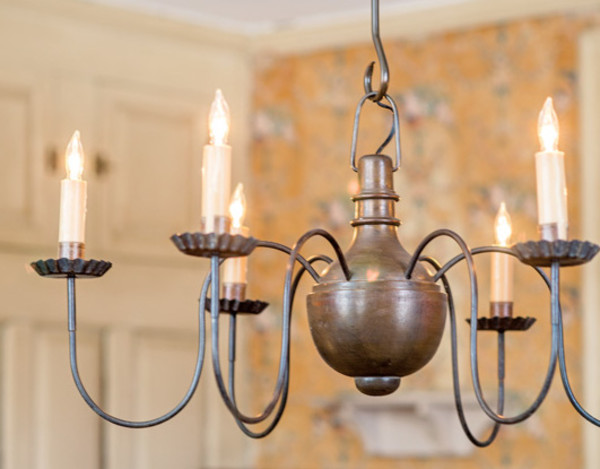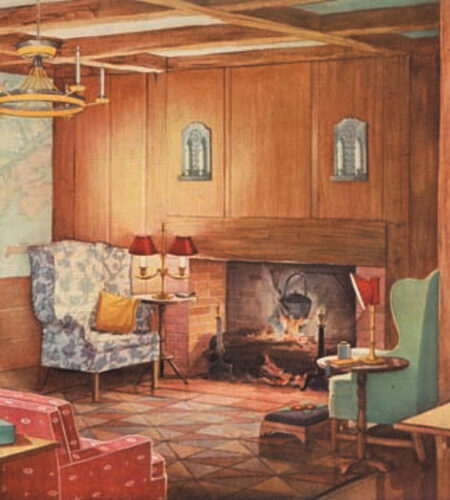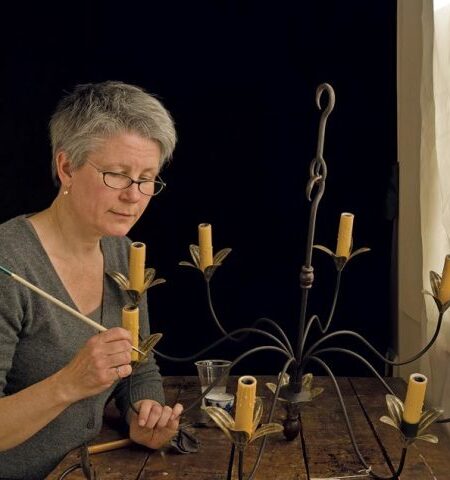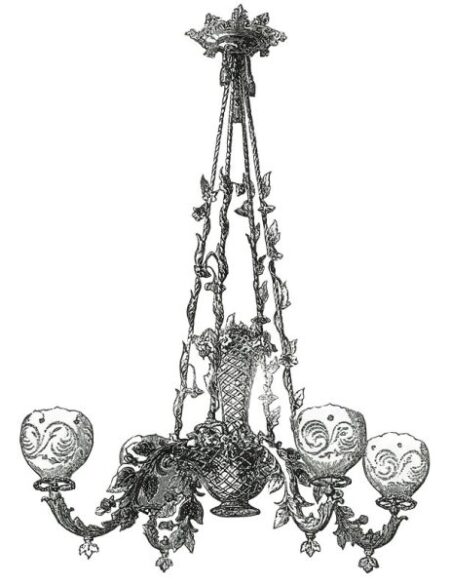This content was originally published on OldHouseOnline.com and has been republished here as part of a merger between our two businesses. All copy is presented here as it originally appeared there.
His designs are faithful reproductions-not quite replicas, as they are wired for electricity. (They can be made for use with candles.) The fixtures are designed to fit into historic homes: The painted finish is built up and lightly distressed, the hand-mixed glaze colors compatible with period pigments. An aged tin finish is used on wire arms and bobeches.
“Company research has determined that early American lighting was made of tin, wood, and iron,“ Burda says. “Turned wooden chandeliers were painted, and had arms made of tin and wire. Only the wealthiest colonists imported silver, crystal, and glass fixtures.“
Many of his fixtures are licensed and authenticated by historical societies and museums. Every fixture is entirely handmade, often with the same hand tools that an 18th-century craftsman would have used. Shown here is model C173-6, with a painted, lathe-turned wood body and six wire arms. Candelabra sockets are concealed by hand-dipped wax covers. Period Lighting Fixtures, (800) 828-6990, periodlighting.com











